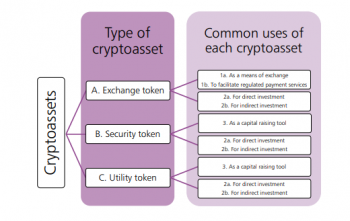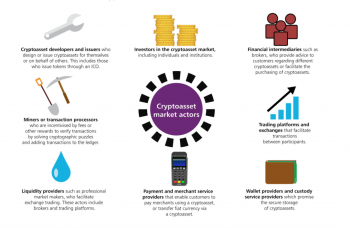The Cryptoassets Taskforce consisting of the HM Treasury, Financial Conduct Authority (FCA), and the Bank of England recently released a Cryptoassets Final Report on October 29, 2018. According to the U.K. Government, the report provides a high-level overview of the U.K.’s regulatory approach to cryptocurrencies and distributed ledger technology (DLT) in the financial services industry.
Taskforce Explores the CryptoAsset Landscape
The Cryptoassets Taskforce report is a 58-page paper that outlines many critical concepts in the cryptocurrency industry and provides an overview of the U.K. market. Although the cryptocurrency and DLT industry is continuously changing, the Taskforce has developed a framework that looks at the different types and uses of cryptoassets.
It begins by defining and differentiating between the types of cryptoassets such as exchange, security, and utility tokens. They also look at the differences between permissioned to permissionless distributed ledger technologies.
 (Source: Cryptoassest Taskforce Report)
(Source: Cryptoassest Taskforce Report)
The report then dives into the U.K. crypto asset market, looking at digital assets as a means of exchange, a form of investment, and a way to raise capital. While the cryptocurrency and DLT industry fall into the financial sector, the paper also analyses the number of actors involved in the market that range from crypto asset developers and issuers to financial intermediaries.

(Source: Cryptoassest Taskforce Report)
Benefits and Challenges with DLT and CryptoAssets
As an emerging leader in the development of DLT, the U.K. recognizes the importance and significance of DLT. DLT can ensure that the end-to-end settlement processes are more efficient and that the finance industry has greater transparency in their reports and audits. They can also introduce automated contract tools to the industry and enable the tokenization of existing assets.
While there are many benefits to DLT, it is a relatively young technology facing many challenges. The existing issues include the lack of interoperability, legal problems, competition issues, privacy concerns, governance challenges, and a general lack of understanding and awareness of the technology.
As for cryptoassets, when they are used to support capital raising it can help boost innovation and competition, improve efficiency, address financing gaps, and build a new investor and customer base. However, there are also many risks associated with cryptoassets such as the risk of financial crime, the threat it poses to consumers, and the dangers it can have to market integrity and financial stability. Furthermore, there is a significant concern that cryptoassets will further facilitate fraudulent activities and cybercrime.
Conclusions and Potential Regulatory Approaches
Regarding DLT, the FCA and PRA decided to take a technologically neutral approach and position towards regulation. The FCA and Bank of England will, however, continually explore the need to regulate, and the potential unintended consequences of controlling new technologies. The FCA concluded that changes to existing regulations are not necessary.
The Taskforce will, however, take action to mitigate any risks cryptoassets pose to the community, and to market integrity. These include preventing the use of cryptoassets to finance crime, engage in illicit activities while encouraging responsible development of DLT and crypto asset-related activities in the UK.
Category: Altcoins, Blockchain, Finance, News, Platform, Regulation, Tech
Tags: blockchain, cryptoasset, cryptocurrency, DLT, U.K







